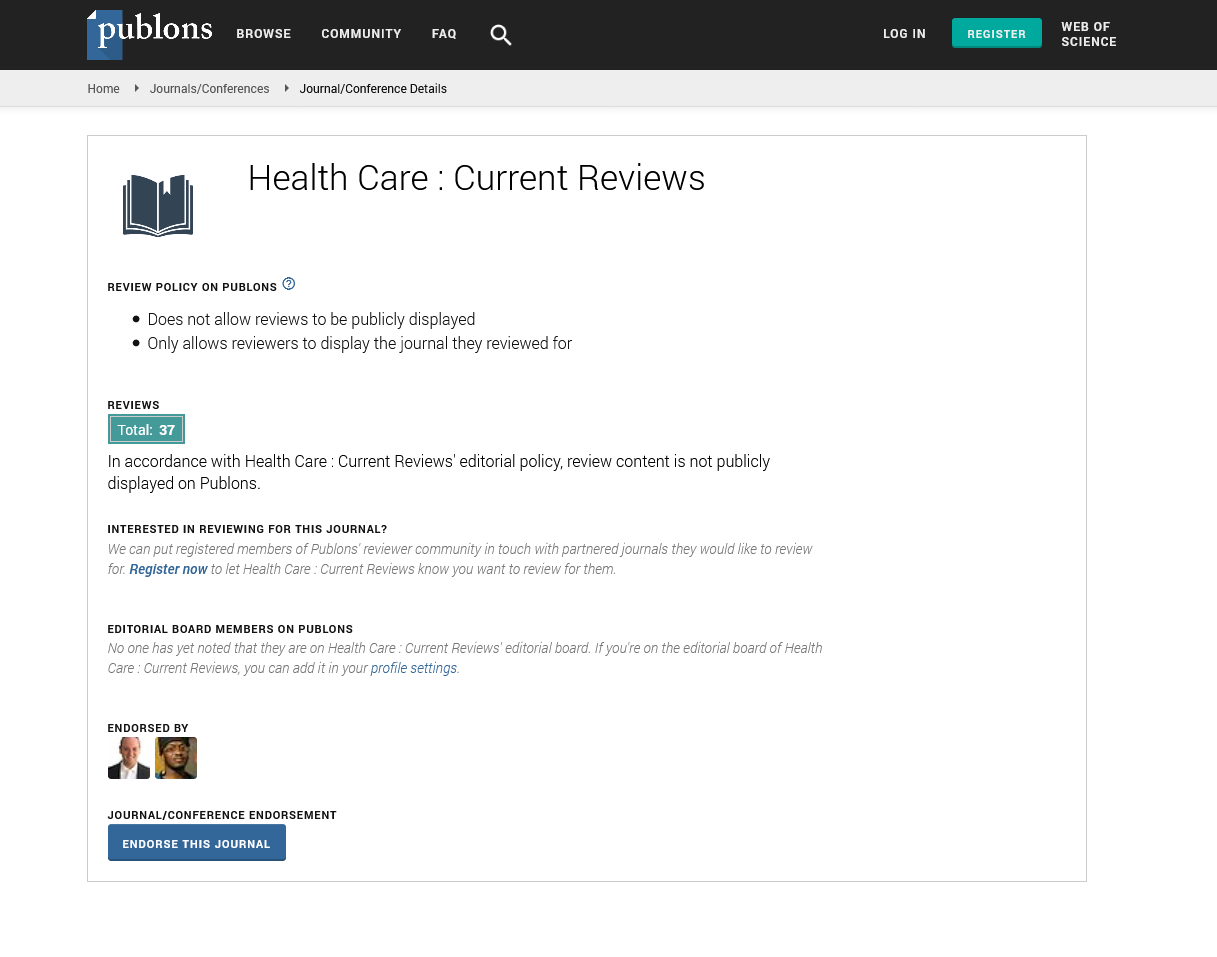Indexed In
- Open J Gate
- Academic Keys
- RefSeek
- Hamdard University
- EBSCO A-Z
- Publons
- Geneva Foundation for Medical Education and Research
- Google Scholar
Useful Links
Share This Page
Journal Flyer

Open Access Journals
- Agri and Aquaculture
- Biochemistry
- Bioinformatics & Systems Biology
- Business & Management
- Chemistry
- Clinical Sciences
- Engineering
- Food & Nutrition
- General Science
- Genetics & Molecular Biology
- Immunology & Microbiology
- Medical Sciences
- Neuroscience & Psychology
- Nursing & Health Care
- Pharmaceutical Sciences
Prevalence of homebirth preference and associated factors among pregnant women in Ethiopia: Systematic review and meta-analysis
Joint Webinar: 8th World Summit on Neonatal Nursing and Pediatrics Healthcare & 9th International Conference on Mental Health and Psychiatry
May 22, 2023 | Webinar
Jira Wakoya Feyisa
Wollega University, Ethiopia
Scientific Tracks Abstracts: Health Care Curr Re
Abstract:
Background: The homebirth preference is the intention/ plan of pregnant women to give birth at their own homes. Planned births outside of health care facilities and a desire for homebirth lead to care-seeking delays and are connected to multiple stillbirths and postpartum morbidities. Therefore, this study aimed to estimate the pooled prevalence of homebirth preference and associated factors among pregnant women in Ethiopia. Methods: The research articles used for this systematic review and meta-analysis were identified through Google Scholar, Medline/Pub Med, Cochrane library, the Web of Science, Hinari, Science Direct, WoS, ProQuest. A standardized data extraction checklist and Stata version 14 for analysis were used. Heterogeneity was assessed by the Cochrane Q test statistic and I2 statistics. To estimate the pooled prevalence of homebirth preference, a random-effects model was fitted. Association between homebirth preference and independent variables was reported using an odds ratio with a 95% confidence interval. Publication bias was checked visually using a funnel plot and Egger’s test was used to check the significant presence of publication bias. Results: A total of 976 research articles were identified from several databases and seven studies satisfied eligibility criteria and were included in the systematic review and meta-analysis. The pooled prevalence of homebirth preference in Ethiopia was 39.62% (95% CI 27.98, 51.26). The current meta-analysis revealed that average monthly income <1800 ETB (OR = 2.66, 95% CI 1.44, 4.90) lack of antenatal care follow-up (OR = 2.57, 95%CI 1.32, 5.01), being multipara (OR = 1.77, 95%CI 1.39, 2.25), poor knowledge about obstetric danger sign (OR = 5.75, 95%CI 1.o2, 32.42), and not discussing the place of delivery with a partner (OR = 5.89 (95%CI 1.1, 31.63) were significantly associated with homebirth preference. Conclusion: This systematic review and meta-analysis examined the high prevalence of homebirth preference. This high prevalence of homebirth preference was associated with low average monthly income (<1800 ETB), lack of ANC follow-up, multipara, poor knowledge about obstetric danger signs, and not discussing with their partner the place of delivery. Improving the knowledge of pregnant women about obstetric danger signs is necessary to decrease the prevalence of homebirth preference.
Biography :
Jira Wakoya Feyisa has completed his MPH degree at the age of 27 years from Arba Minch University, Ethiopia. He was lecturer and researcher, at Wollega University, Institute of health sciences. Within two years he published more than five research articles on high quality peer-reviewed journals and more than nine original article and meta-analysis are under review on Q1 journals. He has been serving as a reviewer of journals.

